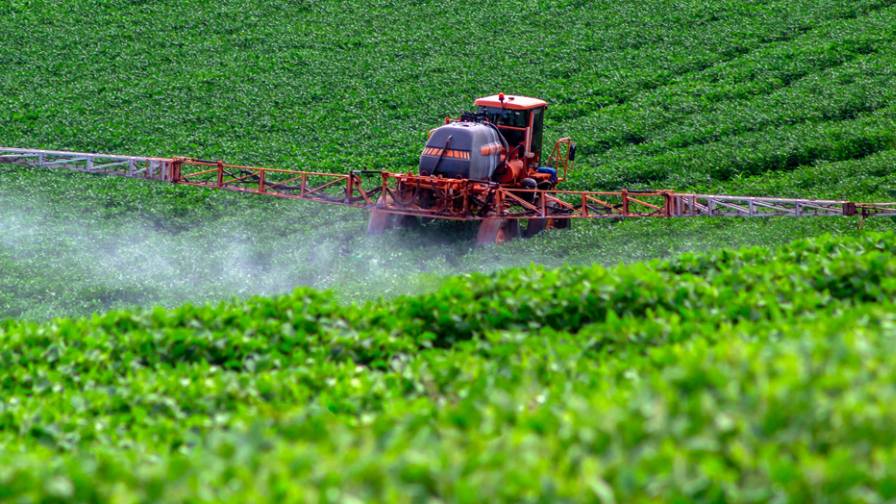Beyond the Barriers: McCain Food’s Charlie Angelakos on the Sustainable Markets Initiative’s Routes to Regen Project
The path to regenerative agriculture is paved with good intentions — but also with real economic challenges, fragmented support systems, and the need for scalable, measurable solutions. Charlie Angelakos, Vice President of Global External Affairs and Sustainability at McCain Foods, is working on Routes to Regen, a Sustainable Markets Initiative Lighthouse project.
In a recent interview with AgriBusiness Global, Angelakos discusses how the project is working to make regenerative farming a more attractive business proposition, what role input manufacturers and ag tech innovators can play, and why cross-sector collaboration is key to global adoption.
ABG: The Routes to Regen project is a bold attempt at addressing both environmental and economic barriers to regenerative farming. From your perspective, how can crop input manufacturers and agri-tech companies best integrate into this model to support scalable change?
Charlie Angelakos: The Routes to Regen Lighthouse project aims to demonstrate how regenerative farming can be made into a more attractive business proposition for United Kingdom farmers when supported by cross-sector collaboration
Following the initial phase of the project, we will be sharing our findings with organizations across the supply chain. While crop input manufacturers and agri-tech companies are not currently involved in the pilot project, their input is welcome, and we encourage those involved at all levels of the value chain to find out more about how they can get involved with the SMI’s Agri Hub work to scale regenerative agricultural systems.
ABG: Economic risk remains a top deterrent for farmers exploring regenerative practices. How does SMI’s model engage private sector players — especially those in the ag input supply chain — to de-risk that transition and incentivize farmer adoption?
CA: While the benefits of regenerative farming are well established, research by the SMI’s Agribusiness Hub found that economic risk and a fragmented support system often deter growers from making the transition to more sustainable farming methods.
This project aims to reduce this risk for farmers and increase adoption rates of regenerative practices by consolidating and simplifying support mechanisms, including financial support, into a clear and accessible framework and allowing the farmer to be in control of choosing a bespoke selection from the menu that suits the needs and ambitions of their farm.
ABG: How much is currently being invested in regenerative agriculture globally? What is the adoption rate of this approach worldwide?
CA: Regenerative farming – while expanding its footprint over recent years – must triple its rate of growth to deliver against the world’s need to limit climate change to 1.5 degrees. That equates to regenerative farmland making up at least 40% of global cropland by 2030, which is estimated will require $100 billion in annual financing to achieve.
That’s why McCain is proud to be working with the SMI to scale the transition to regenerative through the Routes to Regen project and increase adoption of regenerative farming in England.
ABG: With such a diverse coalition of stakeholders – from food brands to banks and insurers — how do you ensure the needs and innovations of input manufacturers and agronomic service providers are represented in the conversation?
CA: Routes to Regen aims to demonstrate the power of cross-sector collaboration in driving the adoption of regenerative farming practices. The long-term aim is to showcase our learnings to other organizations in the food and agriculture space, including input manufacturers and agronomic service providers so they can participate in the future. This will support our ambition to scale this pilot in other regions around the world.
ABG: The Routes to Regen project incorporates tools like the SAI Platform’s Regenerating Together Framework. How important are data measurement and transparency in validating progress, and how might ag tech innovators and biological input providers contribute to this effort?
CA: The Routes to Regen project aims to measure the shift in attitudes of participating farmers regarding regenerative farming and their intentions to change practices as a result of the program.
It will also test the newly developed SAI Regenerating Together Framework, which offers a globally aligned definition and farmer-centric approach for regenerative agriculture, as the basis for its measurement and evaluation.
The long-term goal of the project is to showcase its learnings to other global organizations, aiming to accelerate regenerative farming around the world, and we welcome ag tech innovators and others’ input and involvement.
ABG: What role do you envision crop protection companies playing in the regenerative future, particularly those focused on biostimulants, biofertilizers, precision chemistries, and traditional products?
CA: Real progress in scaling up regenerative farming requires collaboration across the entire value chain, including the food, finance, input, and insurance industries as well as policy and regulatory support and farmer engagement.
The project’s aim is to demonstrate a united approach across these stakeholders in tackling the barriers to regenerative transition for farmers.
Any organizations or initiatives that are interested in finding out more about the program should get in touch with [email protected].






